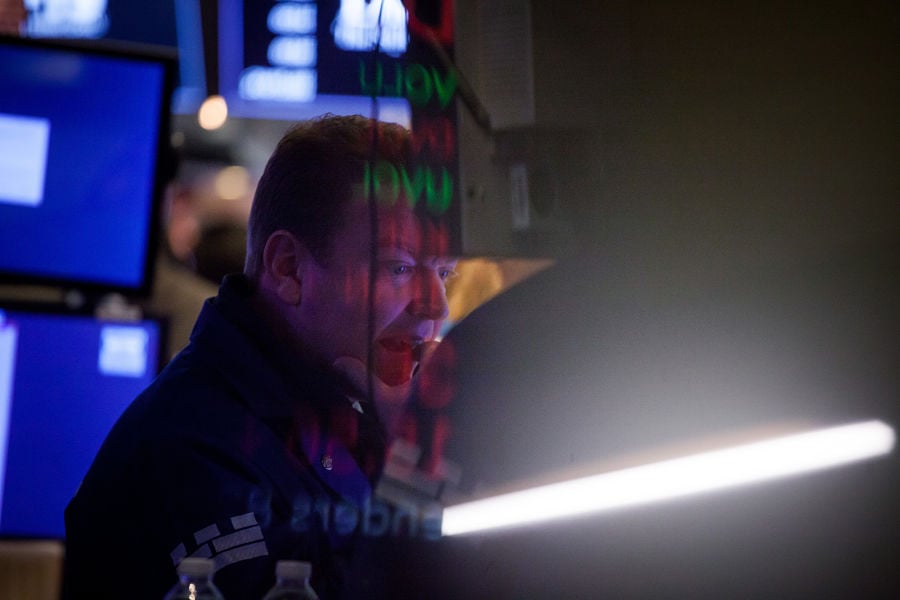Small firms face headwinds ranging from higher rates to the trade war.
The rise and fall of small-cap U.S. stocks was one of the most jarring market reversals this year. And 2019 is expected to only bring a modest recovery thanks to pressure from higher interest rates and concerns about peaking earnings growth.
Investing in smaller, domestically focused companies had been among most popular strategies in 2018 as tariff tensions and a fiscal stimulus boost made them into safe havens. But the so-called America First trade has completely unwound. The Russell 2000 Index has plunged 16% from an August record and is on track for the first annual decline since 2015.https://cdn-res.keymedia.com/investmentnews/uploads/assets/graphics src="/wp-content/uploads2018/12/CI1182821214.PNG"
Wall Street strategists are warning investors to brace for more turbulence. From the U.S.-China trade war to rising interest rates and cuts in profit estimates, there's no shortage of headwinds for small firms, they say.
Despite trading at the biggest discount to their large-cap counterparts in years, the risk-reward of small caps is unattractive at this late stage of the business cycle, Barclays analyst Venu Krishna cautioned in a note this week, forecasting that the Russell 2000 will rise to 1,560 by the end of 2019, a 6.4% increase from current levels.
Jefferies is projecting the index to finish next year at 1,550, implying a 5.7% gain. Both estimates are below the gauge's average 9.2% annual return over the past 10 years.
Flows into exchange-traded funds paint a more optimistic picture. Buyers continued to pile into ETFs tracking small-cap companies through the sector's slide in September, allocating more than $25 billion for the year, topping the group's 2017 flows.
For most of the year, domestic firms' perceived insulation from global turmoil drove investor bullishness, so trade concerns have probably played a role in funds flows, according to Todd Rosenbluth, director of ETF research at CFRA Research.
Even riskier funds offering leveraged exposure to small caps have attracted a lot of interest, especially during October's market volatility. The $809 million Direxion Daily Small Cap Bull 3X Shares fund, which gives investors three-times the daily performance of an index of small caps, took in more than $381 million in October, the most for any month going back to August 2011.
Direxion Investments managing director Sylvia Jablonski has seen quick and consistent inflows to funds that that have been falling the most, with investors betting on a near-term rebound.
Barclays' Mr. Krishna expects small caps to continue to underperform their larger peers amid slower domestic economic growth next year, which "could take the wind out of the sails for top-line growth" at small firms. While Barclays is not forecasting a recession next year, analysts expect "risk aversion to firmly be in place," which will hurt small-cap stocks.
Despite perceptions that domestic firms are more insulated from the trade dispute with China, small companies actually have higher exports and imports relative to their sales, as well as lower margins and less pricing power to pass along higher tariffs to customers, Mr. Krishna points out. Barclays estimates tariffs will cut small-cap Ebitda growth by around 2.5% over the next year.
Bank of America continues to prefer large caps over small caps in 2019. Small, domestically focused firms have posted "weaker trends than large caps the past few earnings seasons, management is guiding more below than above consensus on earnings, and small caps have seen more earnings estimate cuts than raises by analysts," analysts led by Savita Subramanian wrote.
Leverage near record levels is also a "key risk." More than half of small firms' debt has floating interest rates, leaving them more exposed to rising rates and widening credit spreads.
Analysts forecast volatility, measured by the VIX, to double over the next three years, which doesn't bode well for small caps. Investors should stick to large caps. "What works when volatility rises? Quality of earnings," the BofA analysts wrote.
Morgan Stanley is still underweight small caps — for now. Morgan Stanley's view is that the global economy will bottom out in the first quarter while the U.S. will trough in the third quarter, "which means domestically-oriented companies probably underperform," Mike Wilson, the bank's chief U.S. equity strategy, said in an interview on Bloomberg TV Wednesday.
But some time early next year, maybe during the second quarter, small caps "become probably pretty attractive again," Mr. Wilson said. He noted that the Federal Reserve is probably going to "lean more dovish" when it raises rates next week. "That means maybe they are not going to do as many rate hikes next year," he said.







